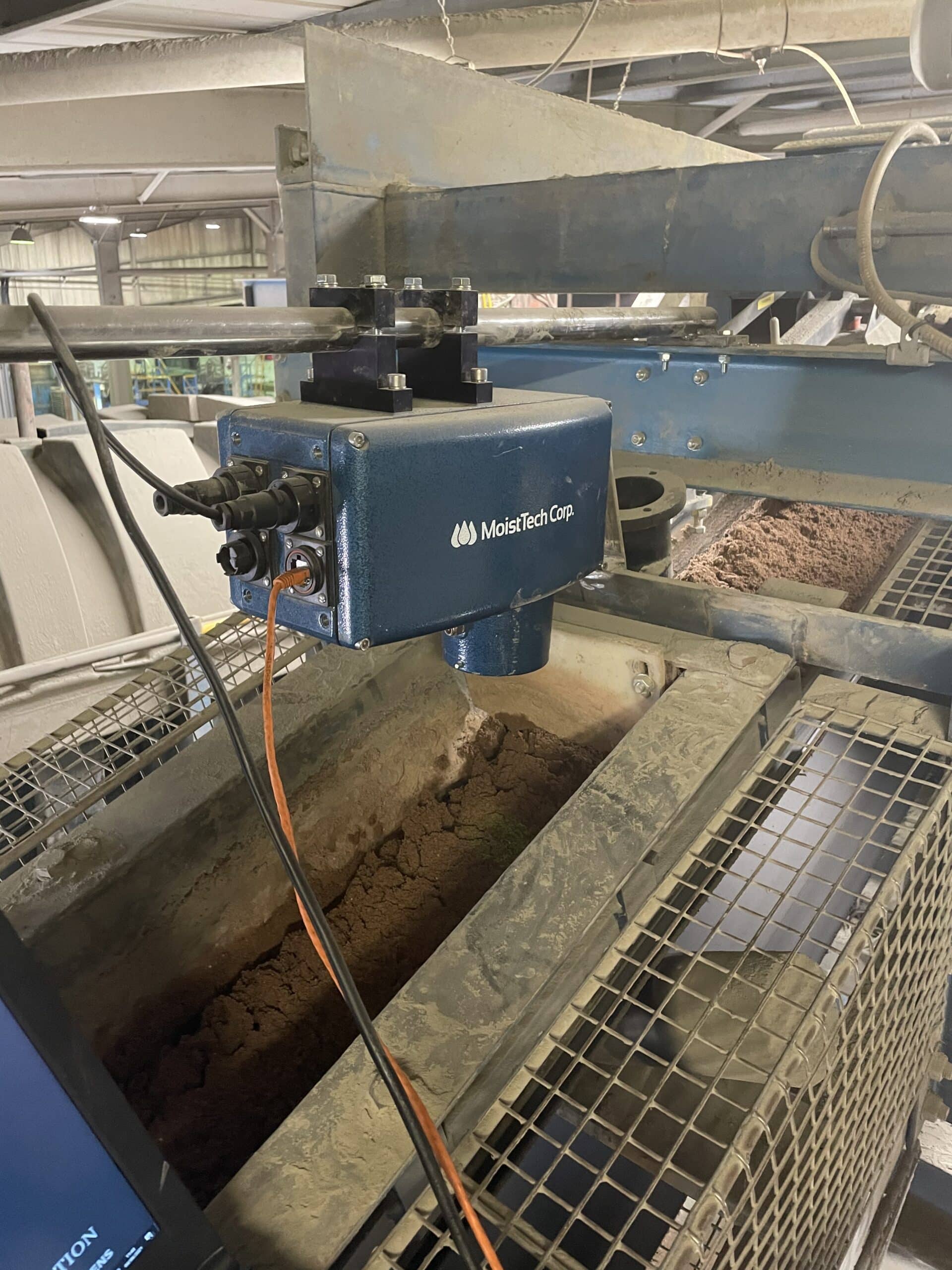Sand Moisture
Proactively Avoid Quality Issues
Sand processing can have its difficulties when it comes to moisture control as too much can cause clumping and inconsistencies while too little can create excess dust and out-of-spec product, all of which puts a strain on cost, energy, and wasted product.
Measuring the moisture content of sand holds immense significance in the construction industry due to its role as a key raw material in cement production. Sand particles tend to attract atmospheric moisture, owing to their small size compared to coarse aggregates. The water-cement ratio plays a critical role in this regard. If the ratio is too high, excessive water leads to larger gaps between the aggregate particles. As the water evaporates, these gaps are filled with air, compromising the strength and durability of the material.
It is imperative to conduct a moisture content test for sand during cement production. This ensures accurate measurement of moisture content, enabling the precise addition of each ingredient while mixing water, sand, and other aggregates in the cement manufacturing process.
Compare for 30 Days!
non-contact
Our equipment never comes into contact with the product, allowing for less waste
zero drift
Our sensors are guaranteed not to drift over time – which saves time and money
closed loop
Create a closed-loop process by tying a moisture sensor into your PLC. Full control over the line!
no recalibrations
We’ve mastered the art of moisture sensors – your unit will never need to be recalibrated for the same product twice!
Save Time, Money & Energy
Dryers are much more efficient when the input moisture content is consistent. The moisture content of the sand entering the dryer varies constantly. Typical sand stockpiles can vary from 2%-8% moisture. This variation in the stockpile sand results in heating inadequacies wasting energy, money and out of spec sand.
Our sensor calibrations, measurement wavelengths, algorithms and sensor optical requirements are pre-set at the factory. Typical accuracy is about ±0.1% moisture. Typical analog range is 1-10% moisture. The outputs can be adjusted to optimize PLC or recording requirements.

Assess
Locate the point in the production process in which measuring moisture will be the most crucial and beneficial. Identify how you will use the moisture measurement data for improvements and if it will tie into your PLC.
Remember this could involve more than one installation point!
Contact
We offer service and support throughout the world for our moisture measurement sensors and would be happy to connect you with a rep in your area. Contact us today for more information!
Understand the Process
MoistTech’s advanced digital processing provides true, exact data regardless of gaps and interruptions of product flow on the belt or screw conveyor. Proper moisture measurement and control can mean the difference on the manufacturing line.
